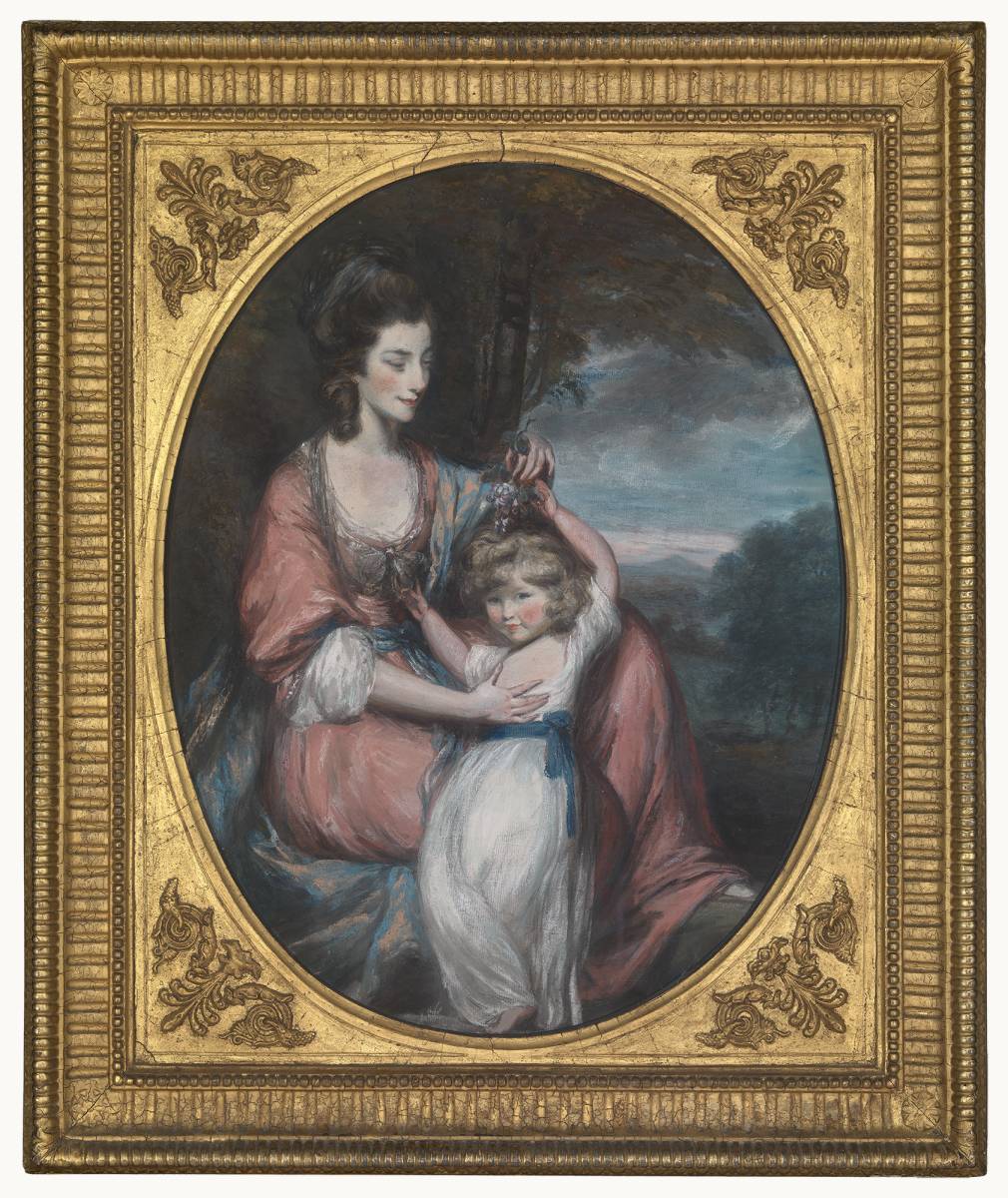This grandly worked pastel depicts Lady Augusta Corbett, the fourth daughter of John Stuart, 3rd Earl of Bute and his wife Mary Wortley Montagu, with her son, Stuart, who would later become Archdeacon of York. As such, this pastel demonstrates Gardner working for one of the most ambitious and most impressively connected families of eighteenth-century Britain. Bute had been close to the young King George III, serving as his Prime Minister in the 1760s; he had orchestrated a series of spectacular marriages for his children, his elder daughters married James Lowther, Earl of Lonsdale and Hugh Percy, 2nd Duke of Northumberland. Gardner’s appeal lay in his ability to translate the vocabulary of Joshua Reynolds’s Grand Manner portraiture into works made on a domestic scale. Preserved in exceptional condition and housed in its original frame, this remarkable image raises important questions about Gardner’s place in the eighteenth-century art world.
Gardner was born in Kendal in Cumbria and after leaving school worked with George Romney. Romney himself had left Kendal for London in 1762, and Gardner followed in either 1767 or 1768, living initially at 11 Cockspur Street, very close to the Royal Academy Schools in Pall Mall which he joined in 1770. On leaving the schools, Gardner joined Joshua Reynolds's studio as an assistant in exchange for further tuition. Gardner was therefore working for Reynolds at the moment he was experimenting with his grandest and most impressive exhibition portraits. Shortly after establishing his own practice, Gardner began to produce works in pastel which closely followed the fashions established by his former master, simply replicating poses and compositions on a more domestic scale. The present portrait perfectly illustrates Gardner’s working method.
Lady Augusta Corbett and her son are elegantly arranged in a landscape setting, Gardner, as Reynolds frequently did, explores the tender relationship between mother and child in a complex interrelated pose. Reynolds was, at this date, experimenting with the relationship between mothers and children, producing a sequence of portraits of patrician sitters and their offspring arranged imaginative poses. Gardner’s sophisticated portrait is a manifestation of the new interest in children and childhood amongst British aristocrats; Lady Augusta Corbett is consciously shown engaging with her son in tender play, an intimate idea which was ideally suited to the medium of pastel.
Gardner developed a novel technique using pastel to approximate the appearance of oil. By combining pure pastel with a liquid vehicle he was able to create a range of textures, from the soft rendering of features and hair – pencilled in pure pastel - to the more broadly handled landscape background. In the present work the areas of greatest opacity, such as the costume, are created using Gardner’s distinctive technique.
Gardner was exceptionally successful working for a large number of patrician families, remarkably existing without the need to rely on London’s burgeoning exhibiting societies, he showed only one work at the Royal Academy, in 1771. His ability to harness the grand manner portrait style of Reynolds and deploy it on a domestic scale in the fashionable medium of pastel obviously appealed to patrons. More work needs to be done to establish where Gardner’s pastels were displayed, but it seems likely that they were considered more intimate than the formal full-length portraits of Reynolds of Gainsborough.
Lady Augusta Corbett died shortly after this portrait was completed. Her son, Stuart Corbett, went on to have a successful ecclesiastical career. Supported by his mother’s family, Corbett had the perpetual curacy of Wortley, a living controlled by his uncle, the Hon. J. A. Stuart Wortley, eventually being appointed Archdeacon of York in 1837 and receiving the rectory of Ordsall from his cousin, Lord Wharncliffe.


